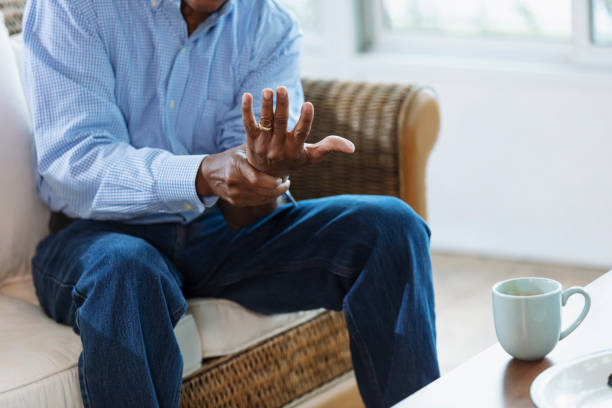
You take pride in your strength.
Sometimes, even if the joint stiffness is severe, you try to hide it. You try to mask it. You ‘suck it up,’ put on a brave face, and go on your way. Fatigue, tenderness, swelling - you know it all, all too well.
If any of this reminds you of your battle with rheumatoid arthritis (RA), you’re not alone.
Caused by an autoimmune condition, RA is the most common inflammatory arthritis among Black folks, and is more likely to affect them than whites and Asians. These findings are made even more concerning by the fact that the research overwhelmingly focuses on white people.
In other words, the Black community is vastly underrepresented in the medical literature - and it shows. If your symptoms of RA aren’t improving, this may be a reason why. Doctors simply don’t know how to treat you!
Here are five reasons your RA is staying the same or getting worse…
1. Medical Biases
According to the Arthritis Foundation, Black men and women with RA are significantly less likely to get pain medicine than white patients. Now, if we’re being honest, this issue can go both ways. Sometimes, you just don’t want to admit it’s a problem. Maybe you wanna downplay it because you don’t want to feel like a victim. Perhaps, you simply don’t like taking more pills and hope it just goes away.
But other times, it’s on the doc. In fact, one major study from the New England Journal of Medicine indicated that over 90 percent of healthcare systems provided white patients greater pain relief doses than Black patients. Some believe this stems from a bias among doctors. Certain doctors may falsely believe that Black patients can handle more pain and don’t suffer the same level of discomfort as other races.
Imagine if professional sports teams do this with their athletes!
RELATED: 11 Arthritis-Friendly Tools That Make Daily Life Easier
2. Tough Labor
Blue-collar workers make the world go around. If you’ve ever worked or currently work this kind of job, you know the struggle. Underappreciated and underpaid - but overburdened! Well, turns out this is another reason your RA may not be improving.
Many physically demanding jobs are performed by Black men and women, increasing the likelihood of injuries and arthritis.
It's not just blue-collar jobs. Black folks also account for many positions in professional athletics and military services. If all that moving, running, lifting, bending, jumping, thumping, and bumping is wearing you down, it might be time to look for different work (or seek medical accommodations).
3. Tough Love
Speaking of tough labor, there’s also tough love. Turns out, tough love isn’t just about setting others straight; it’s about getting yourself right too. Sometimes, the best way to improve yourself is to take a hard look in the mirror and be real.
- Are you ignoring signs of pain and discomfort?
- Are you sacrificing yourself for others but neglecting self-care?
- Are you pushing yourself to the breaking point, but won’t admit it?
There are a lot of stereotypes in the Black community, and while they can do wonders for strength and perseverance, we’re all still human. If you’re pushing yourself beyond the breaking point, talk with a family member. See a mentor, trusted coworker, or confidante.
Might be time for some self-love!
RELATED: 10 Surprising Ways Arthritis Can Affect Your Whole Body
4. Obesity
I know, I know, you’ve probably heard this too many times. If you’re someone struggling to lose weight, don’t get down on yourself. Yes, those extra pounds can be hard on your joints, but beating yourself up over it isn’t going to shed that fat.
The best thing you can do is focus on simple measures, like daily walks, fewer calories, and less canned and processed meals. Nearly half of Black adults in the U.S. are considered obese, so find a friend! Share in your mutual goal to lose weight. If you can drop 10 lbs over time, this could reduce up to 50 lbs of pressure on your poor knees!
5. Improper Treatment
What are you using? What haven’t you tried? What’s worked and hasn’t worked? When it comes to RA, there are all kinds of treatments, from ointments and gels to nonsteroidal pills and lubricating injections.
Each has its own side effects (how fun), so if one doesn’t have you feelin’ right, you’ve always got options. Speak with your doctor because there are many ways your treatment plan can be modified over time. And if you’re not sure about your doctor, bring a friend to appointments, listen to suggestions, and explore different providers.
At the end of the day, you don’t just want a pill-pusher. You want a caring physician who treats you like a person. Whether that doctor is Black, white, or a green Martian is up to you!









